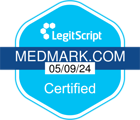A PCP Reaches Out for Help
Gary Enos, M.D., editor of the Addiction Pro journal published online for substance abuse treatment professionals, has written about a program operating out of Washington, D.C. It all began through efforts by Edwin Chapman, M.D., to help stabilize his patient population. It seems, as a demographic group, his private practice’s average patient is a 52-year-old male who has spent ten years in some type of jail, with a 60 percent chance of testing positive for hepatitis and a 10 percent incidence of HIV, both stemming from a long-time history of opiate addiction.
Chapman began considering the benefits of Suboxone for addiction and how this partial opiate agonist might help stabilize his core patient group. Based on his logical conclusion that they could move forward to improve other areas of their life if they could get their addiction under control, he looked for a way to integrate the primary care he was providing with a level of behavioral health including psychiatric support.
An Addiction Shepherd in Search of a Flock
In the meantime, a urologist at Howard University, Chiledum Ahaghofu, M .D., wanted to combine Howard University’s excellent history of partnering with other agencies within the community and also design a patient-centered care model. His ideal population would be vulnerable but would not require costly interventions.
And so the two joined forces, and the Buprenorphine Integrated Care Delivery Project was established, funded for four years, as of this writing, by the District of Columbia’s Health Department. The project goals over the next four years will be to demonstrate that Suboxone for addiction treatment combined with good solid primary care will result in increased patient satisfaction, cost reductions, and improved quality of life.
Chapman proposed that the money saved through reduced incidents of criminal activity as well as fewer emergency department visits and decreased hospitalization would yield increased funds to be spent in community support projects. The following three components are critical to the program’s success:
- Patient-centered care plans are created through the efforts of comprehensive care coordinators who serve as liaisons between the primary care and behavioral health providers.
- Electronic records for each patient are shared by both the primary care and behavioral health providers. Patients are asked to sign a release authorizing exchange of information across both programs that meet both HIPAA standards protecting general healthcare information and 42 CFR criteria that address substance abuse treatment.
- Patients receive services from both primary care and behavioral health providers in one office visit through the use of a telehealth program.
Costs have been managed by utilizing college students in social work and nursing programs in lieu of registered nurses. Foreign medical graduates also participate while they are qualifying for their certificates as well as other community health workers.
Suboxone for addiction treatment begins at a typical daily dose of 24 mg, which provides a maximum level of stability related to a lower incidence of side effects. While the federal government generally restricts the number of patients that one doctor can manage using Suboxone for addiction treatment to no more than 100, including all practice sites, Dr. Ahaghofu is permitted to exceed that limit because the program is classified as research.
The program itself would not have been possible had not the District of Columbia approved the use of Medicaid funds for office-based Suboxone for addiction treatment about five years ago, Ahaghofu says. The patients present at Dr. Chapman’s office for their primary care, and they then communicate with Ahaghofu or another behavioral health provider via telehealth communication technology.
And the program is succeeding: While only 73 patients enrolled in April 2015, they are participating not only in care for their low-acuity behavioral health issues but also in group and individual counseling sessions, an important modality mandated for addiction treatment with Suboxone.
Combining Primary Care and Suboxone for Addiction Treatment
Besides addressing addiction issues, the program also assists patients with sidebars such as stabilization of their housing or homelessness. The use of Suboxone for addiction treatment requires providers to formulate a plan to address the person in a 360-degree dimension, because if a patient is worried about where they will sleep at night, for example, they cannot focus on treatment recovery.
As the project moves forward, benchmarks will measure overall cost savings to the system, with a 5-to-1 reduction expected, as well as improved mortality among Dr. Chapman’s patients. Client surveys will also measure their level of satisfaction with treatment providers at all levels. Assuming that satisfaction with the telehealth services continues to climb, there is anticipated initiation of telehealth programs in cardiology, dermatology, and, of course, urology.
The National Center for Healthcare Leadership established its Leading Together initiatives and standards in 2012, and the Chapman/Ahaghofu program has been identified as one of the leadership challenge programs for 2015. This integration of services project began when the Substance Abuse and Mental Health Services Administration (SAMHSA) identified that primary care patients with concomitant addictions experienced congestive heart failure 9 times as often as non-addicted patients, cirrhosis 12 times more often than non-addicted patients, and pneumonia 12 times more often than non-addicted patients. When patients must seek primary care and behavioral health providers who do not integrate services, they are 4 times more likely to go without the services they need.
Substance abuse treatment programs like this one that utilizes Suboxone for addiction treatment also reduce the incidence of depression and also morbidities related to diagnoses such as diabetes. In fact, all methods for substance abuse treatment are trending toward addressing of the whole patient. The days are fading when only one or the other aspect of the patient received care. With programs that offer co-located, cooperative services such as this one, the outlook for success in substance abuse recovery is brighter than ever. Call your local Suboxone addiction treatment program for more information. Even if your local clinic is limited to medication-assisted treatment, the doctor and counselors there will refer you to other treatment providers that can help you find your way on the Road to Wellness.


